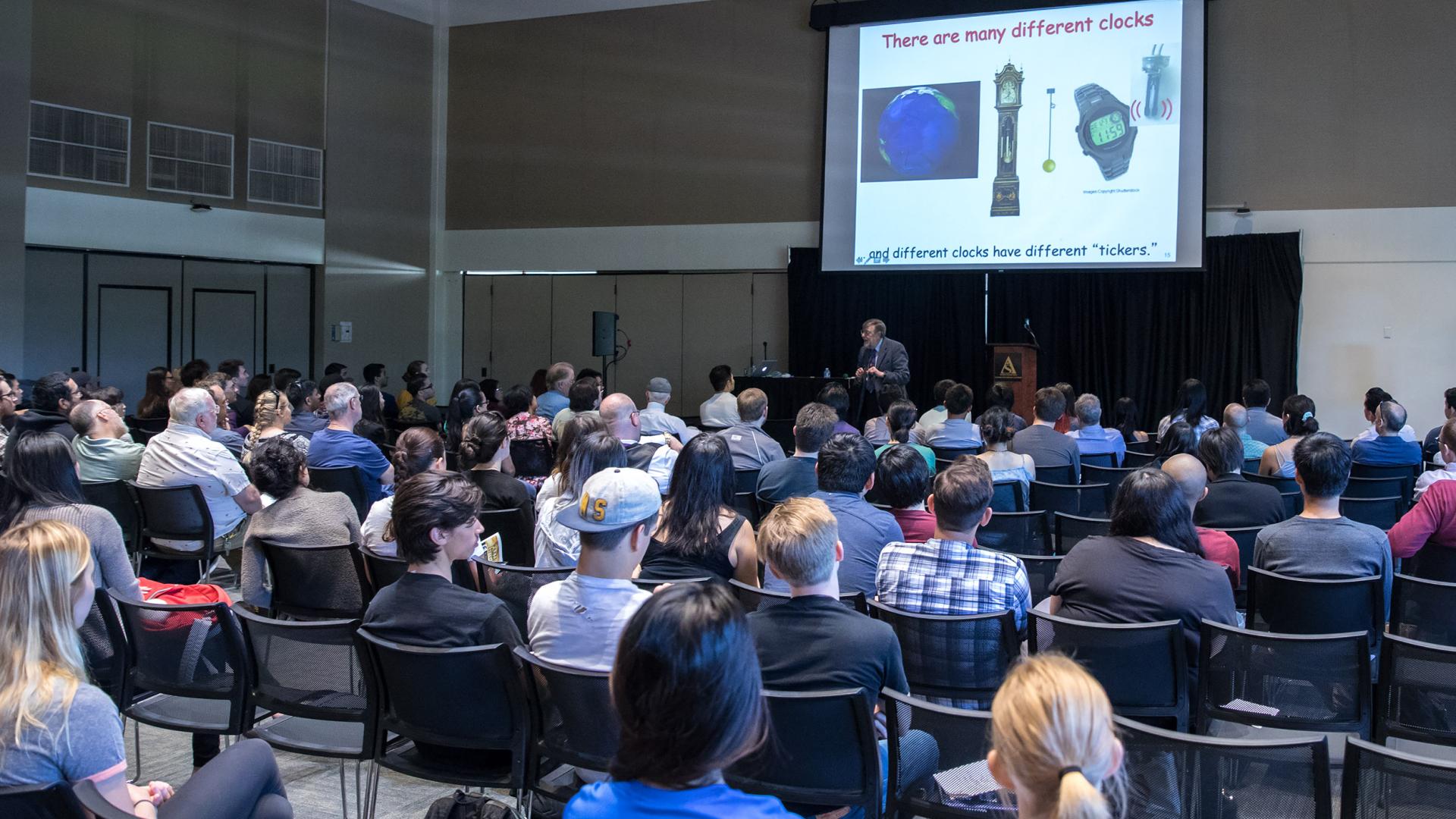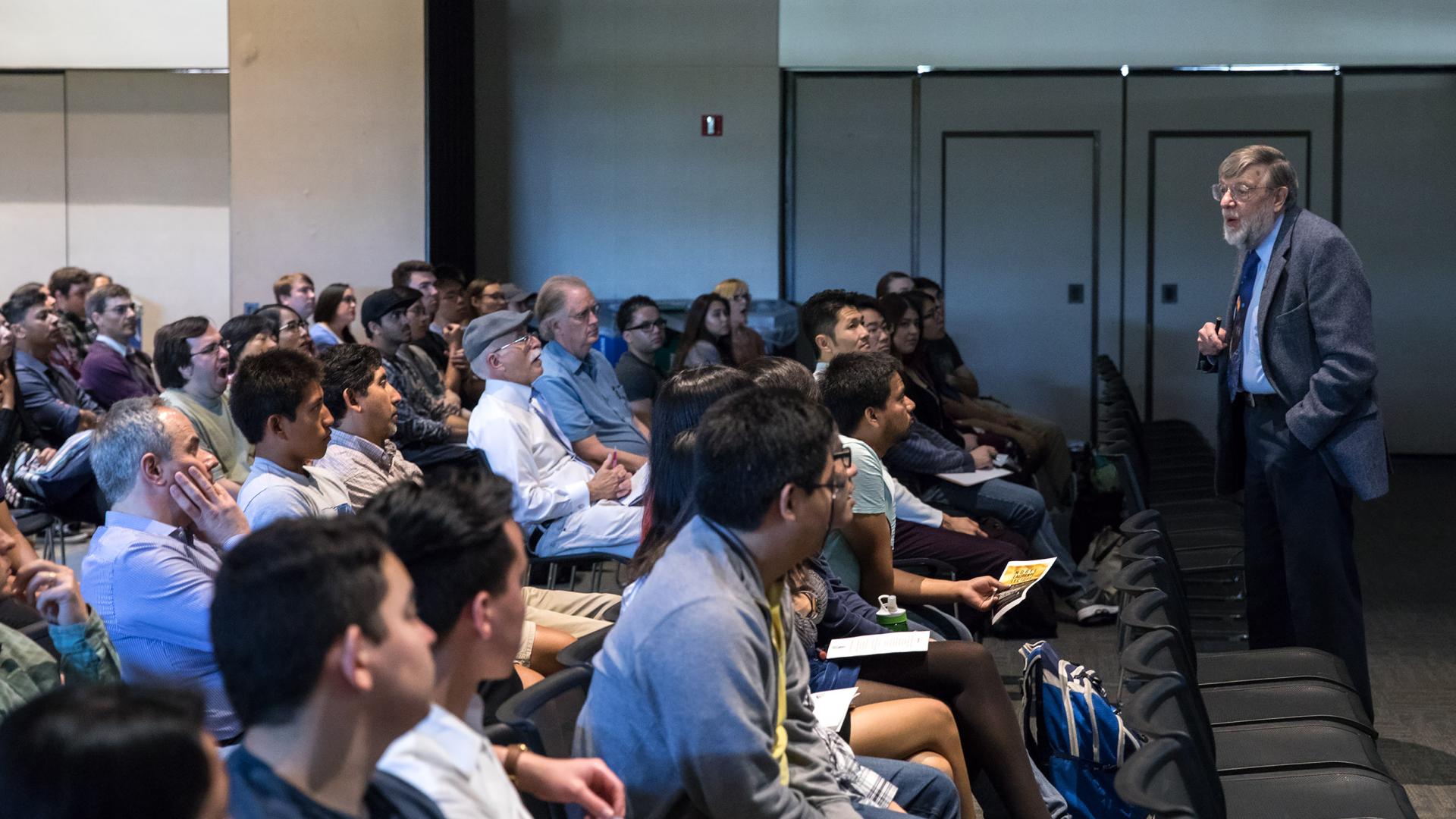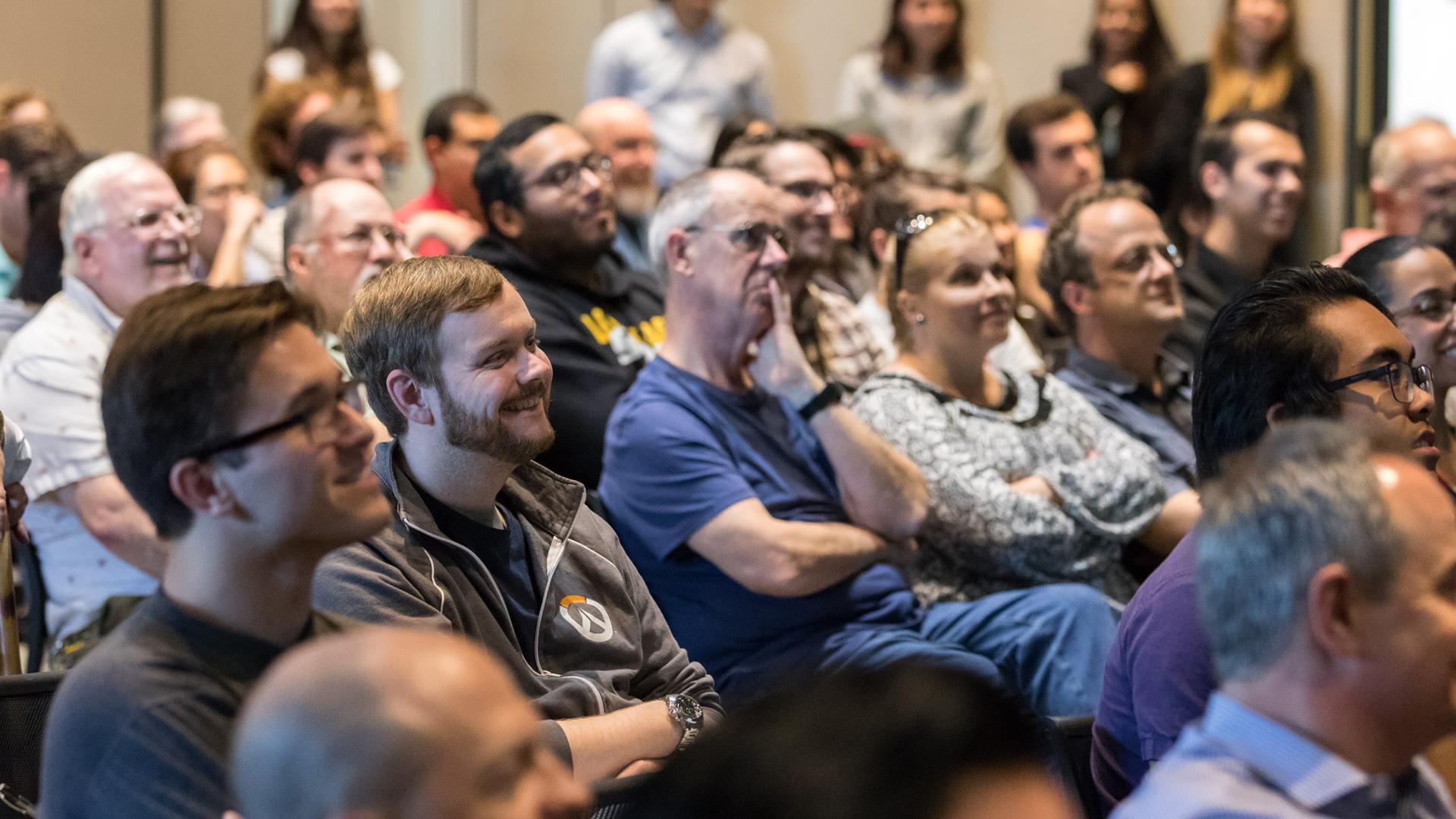Nobel Laureate shares insights on atoms and clocks
William Phillips performed his first experiment in the basement of his family’s Pennsylvania house, using fire, explosives and rockets. He didn’t blow up or set fire to anything, although he did trip the circuit breakers more than once. But all the hours Phillips spent testing the limits of his parents’ patience eventually resulted in a lifetime of science.
Today, Phillips is a renown physicist and Nobel Laureate, having won the coveted prize for physics in 1997 for his experiments using laser light to cool and trap atoms. He shared the award with Steven Chu and Claude Cohen-Tannoudji, who also developed methods of laser cooling and atom trapping.
Their discovery led to creating a better, more accurate atomic clock, which have the most accurate and frequency standards known. They are used as primary standards for time and to control wave frequency of television broadcasts and in global navigation satellite systems (GPS).
Phillips explained his work to an audience of roughly 100 students and faculty who attended the 39th Nobel Laureate Lecture on Wednesday in the USU Ballrooms. The lecture was sponsored by the College of Natural Sciences and Mathematics.
He began explaining how Albert Einstein changed the way we think about time and how it has evolved into time being measured by the ability to cool a gas of atoms to temperatures millions of times lower than any naturally occurring temperatures. That’s where his work comes in.
As Phillips pointed out, there are all sorts of different clocks. There’s the grandfather clocks that keep time with a pendulum, that quartz watch on your wrist and the battery-operated one hanging on your parents’ kitchen wall. But, as Phillips points out, those develop discrepancies.
“The best clocks, it turns out, are atomic clocks and the tickers for these clocks are atoms,” Phillips said. “Why are atoms tickers? Atoms have certain energy levels and one of the great things about atoms is that every atom of the same kind is identical to other atoms of that kind.”
The operation of an atomic clock is based on atomic physics, meaning that it uses microwave signals that electrons in atoms emit when they change energy levels. According to Phillips, when particles inside atoms are exposed to certain frequencies of temperature jump back and forth between energy states. Heat them up, the atoms speed up; cool them down and they slow down.
Clocks based on this “jumping” within atoms can provide a precise way to count seconds. The accuracy of an atomic clock relies on two factors, starting with the temperature of the atoms. Colder atoms move more slowly, allowing longer probe times. The second factor has to do with the frequency of the electronic transition or laser. Higher frequencies and narrow lines increase the precision.
“We have decided by international agreement that the difference between two specific energy levels in cesium will define what we mean by one second. In other words, by international agreement, one second is nine billion ticks of radiation that can connect two levels of cesium,” Phillips said.
The international standard for the length of one second is based on atoms. The official definition of a second is 9,192,631,770 cycles of radiation that gets the cesium to vibrate between the two energy states.








